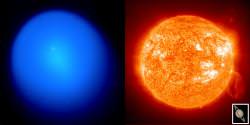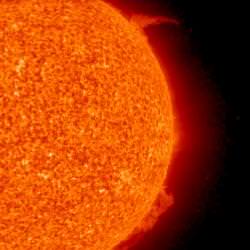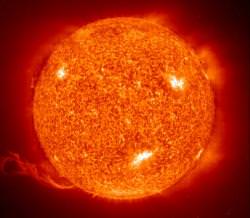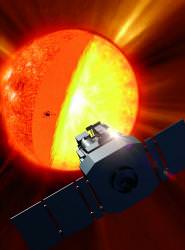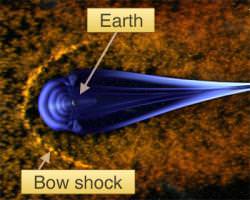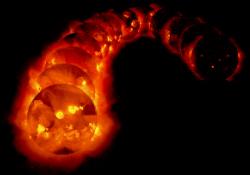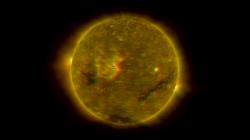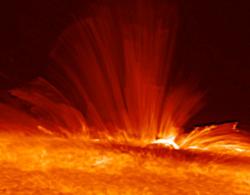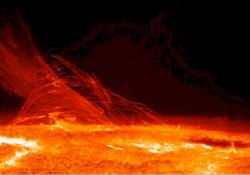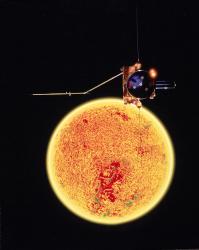All right, that title is a little misleading. In fact, when I first read the original press release, my skepticism alarms went off. But it’s true, the amazing Comet Holmes now has a halo that’s larger than the Sun. Not bad for a comet that, until three weeks ago, was just a tiny dim dirty snowball orbiting near Jupiter.
Comet Holmes made its spectacular outburst on October 24, 2007. Formally dim enough to only be visible in the most powerful telescopes, it quickly brightened up to be seen with the unaided eye – even in light-polluted cities (like my very own Vancouver).
Astronomers from the University of Hawaii’s Institute for Astronomy recently measured the halo surrounding Comet Holmes to be 1.4 million kilometres (0.9 million miles). And as I mentioned in the opening paragraph, that makes it larger than the Sun. Of course, it’s just a thin halo of gas and dust particles, but still, that’s pretty impressive.
Just to get a sense of the change, Holmes has brightened by a factor of 500,000x. All this gas and dust is pouring out of a tiny nucleus only 3.6 km (2.2 miles) in diameter.
In the image captured by the Institute for Astronomy, you can make out the brighter nucleus, near the centre of the halo. And then there’s a hazy tail pointing towards the lower right of the image.
Over the next few months, astronomers predict the cometary halo will expand even larger; although, it will be fading away as the dust disperses over a larger volume.
Holmes performed a similar outburst back in 1892, and it brightened again just a couple of months later. Astronomers are hoping it’ll make another double outburst, just like it did before.
Original Source: IfA News Release

